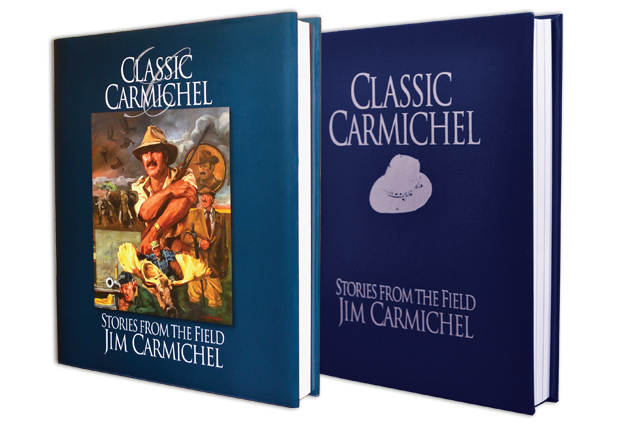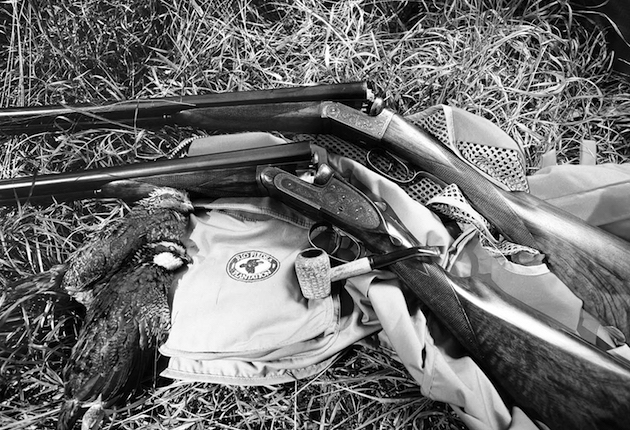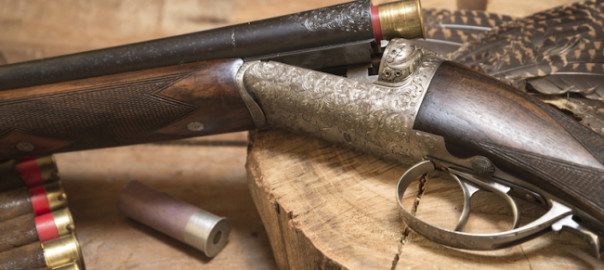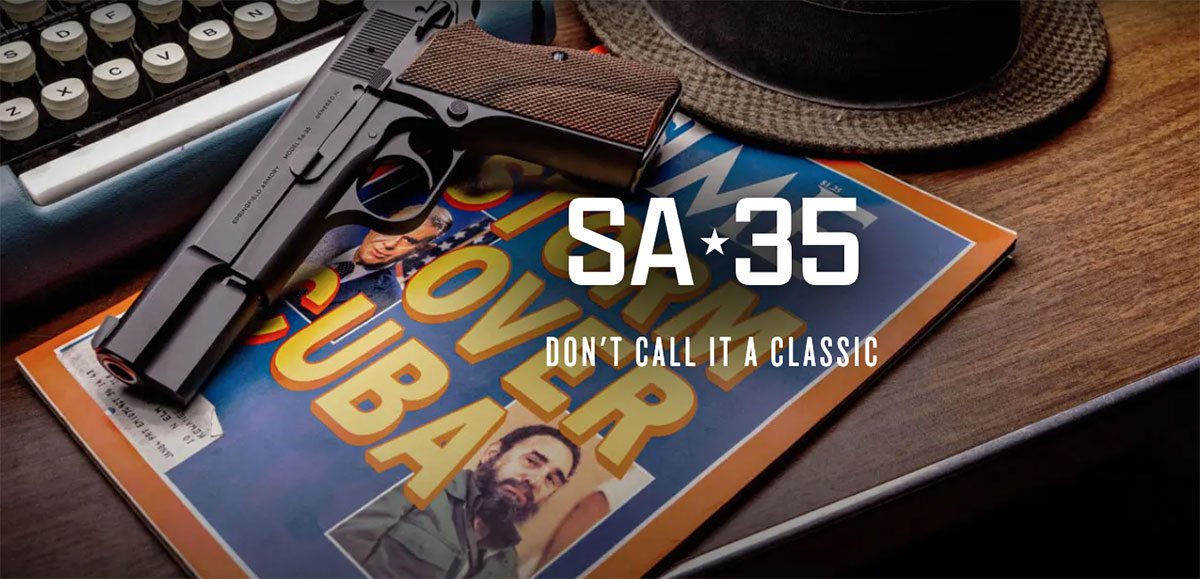A fine gun can become a lifetime friend, providing practical use and enjoyment, while requiring only simple care in return.
How many investments can you name that virtually guarantee a sizable return on your money and also offer the added bonus of pride of ownership? Sure, there are a few; buying antique automobiles may be one, and collecting fine art is certainly another, but unless you named gun collecting, you missed one of the surest bets around.
But first, what is a gun collector? According to the rad-lib media, a gun collector is some weird misanthrope who stockpiles guns and ammo in anticipation of invasion from the IRS or government agents in black helicopters. Which is about the same as calling a collector of Islamic art a terrorist.
More to the point, the guy who owns a rifle for a once-a-year deer hunt is simply a gun owner. Whereas someone—you, for example—who buys guns because he admires their beauty, workmanship, function and value can rightly call himself a collector.
All collections, guns or art, begin with the acquisition of a single piece. And as with the art collector who began with a painting or sculpture for a few dollars and grew his passion into a collection worth millions, the collector of guns needs an “eye” for beauty, style and talent, plus the shrewd investor’s sense of what will be in demand years hence. Unlike the art collector who also depends on a certain amount of luck, capricious critics and the whimsy of fashion, gun collectors play by safer and more predictable rules.
There are several categories of gun collecting. Of these, perhaps the most exciting is “treasure hunting,” in which the collector prowls gun shows, pawn shops, yard sales and even obituaries. (“Sorry to hear about your husband, ma’am, wish I had known him. By the way, did he leave any old guns?”) But to be a successful treasure hunter you need to have a broad-based knowledge of guns and their value, plus plenty of spare time and the dedication of a bloodhound.
The thrill of the chase is part of the charm of hunting gun treasures, and is occasionally spurred on by reports of collectors finding such things as Walker Colt revolvers in junk shops for a few dollars and reselling for a quarter-mil. But the likelihood of such finds is about the same as discovering a doubloon-laden Spanish galleon in your swimming pool.
Another type of gun collecting is the “specialized category,” in which the collector sets out to accumulate specimens of only one brand or even a single model within a brand. Examples of this are collectors who search only for, say, Parker or Fox shotguns, Colt pistols, or Winchester rifles. This is a fairly secure and disciplined form of gun collecting. It has a broad appeal because it offers pride of ownership (and the envy of other collectors) with an almost guaranteed solid return on your investment, provided that you’ve bought prudently.
The downside of most specialized collecting is that owners would rather have a hip replacement without anesthetic than endure the stress of taking one of their guns afield and actually shooting it.
These and other types of gun collecting have their own special attractions, but one thing you don’t want to lose sight of is that those old and rare Parkers and Winchesters were once new and bought to be used. Which is why I advise any fledgling collector to take a careful look at the guns being built today and decide which of them will be a rare jewel tomorrow. Perhaps surprisingly, there are solid rules to follow that will virtually assure a sound investment.
Rule Number One
It’s simple: buy a gun you like. In other words, trust your sense of style and good taste. If it turns out later that your choice wasn’t such a smart investment after all, at least you will have a gun that you enjoy looking at and using.
The best example of tasteful gun-buying occurred just a few months after Linda and I were married. We were at a firearms trade show, her first ever, and while I went about my business, she wandered off to learn what sort of peculiar world she had married into. A couple hours later she caught up with me and made a startling announcement: “I’ve bought a gun.”
This bit of news, I admit, was met with apprehension. After all, she knew little about guns, had never bought one in her life, and being, well, a woman, there was no telling what sort of chrome-plated claptrap might have tickled her fancy. So, keeping a stiff upper lip, I allowed her to lead me to the manufacturer’s exhibit where she had purchased her first gun.
Astonishment does not nearly describe my reaction as she proudly pointed to a 28-gauge Parker Reproduction side-by-side, complete with gorgeous wood, skeleton buttplate, and fitted leather case. Of the hundreds of guns on display, she had picked out the most beautiful and stylish.
Later that day, over olive-bearing refreshments, I confessed my amazement. “Why did you buy that particular gun?” I had to know.
“Because,” she replied, “it looks like what I think a gun ought to look like.”
I’ve read scores of gun books, and hundreds of articles on the subject, not counting the hundreds I’ve written myself, but never have I seen so much gun wisdom expressed in so few words. So remember, when investing in a gun—does it look like a gun ought to? And trust your good taste.
Rule Number Two
Buy types of guns that have a history of increasing in value. The bluest of “blue chip” shotgun investments have long been side-by-side doubles, with certain over/unders also being highly desirable. Smaller-gauge guns almost always appreciate faster than larger bores, typically because there are fewer of them.
A clean Parker Bros double in 12-gauge DH Grade will now sell for upwards of eight grand, whereas you can expect the same grade in 28 gauge to fetch about four times that; if a .410, you can double even that.
Another good indicator of the increasing demand for good doubles exists in Model 21 Winchesters. Nowadays, you’re lucky to find a good used 12 gauge for less than seven thousand. If you had bought the same gun new twenty or even a dozen years ago, you would have made a solid 10 percent per annum on your investment, plus owning and using a shotgun that says a lot about who you are.
Rule Number Three
Buy the best you can afford—and then some. I have frequent urges to kick myself, most usually when I look at a gun I bought with great pride and now wish I had bit the bullet harder and stressed my finances a bit further. Higher-grade guns appreciate at a faster rate because there are fewer of them. Research the value index of Belgian-made Browning Superposed shotguns in the various grades and you’ll get an eye-popping example of the return on top-quality guns.
Likewise, when investing in used guns, buy only the most pristine examples. This ensures that when you choose to sell the gun, the buyer won’t have anything to complain about except your price.
Some years ago, when I was a member of a panel discussion on gun collecting, someone in the audience asked me if I ever regretted selling any of my guns.
“Sure,” I confessed, “every one of them.”
And therein lies the fallacy of collecting guns as an investment: a fine gun can become a lifetime friend, providing practical use and enjoyment, while requiring only simple care in return. Friends like that are hard to find and harder to part with, so go back and read Rule Number One again.
 “Guns as Investments” is a chapter in the book Classic Carmichel—Stories from the Field.
“Guns as Investments” is a chapter in the book Classic Carmichel—Stories from the Field.
Classic Carmichel features nearly 400 pages of hunting adventures and firearms expertise by Carmichel, widely acknowledged as one of the foremost experts on sporting arms. Carmichel’s exploits and prowess had no equal during what is arguably the Golden Age of international hunting and shooting. These are not just stories by a well-traveled adventurer—they are pure literature, written with a style and eloquence that deserve inclusion in any collection of great outdoor books and writers. Buy Now




